Plastics offer a long-lasting, artificial substrate for microbial communities to colonize and create a biofilm, forming what is known as “the plastisphere”. Potentially harmful microalgae (PHM) have been identified living attached to plastic debris in the global ocean for over twenty years. In the present study, we have incubated plastics in-situ at five sites worldwide (Villefranche and Toulon, France; Naples, Italy; Galway, Ireland; and Rio Grande, Brazil) in order to generate a comprehensive, global dataset on the plastisphere community. With the goal of sampling the PHM community of the marine plastisphere, DNAmetabarcoding targeting the 18s V4 region has been employed to identify genera capable of causing harmful algal bloom (HAB) events. Differences in PHM richness and community composition were found according to site, season and incubation times. PHM richness also varied with polymer type, but community composition did not. Toxic PHM taxa recovered included Alexandrium sp., Amphora sp., Heterocapsa sp., Ostreopsis sp., and Prorocentrum sp. among others. This is the first study to harmonize sampling efforts across hemispheres in order to assess the PHM community of the plastisphere, greatly expanding knowledge on the presence of harmful organisms attached to microplastic pollution at sea.
promotor/supervisor feedback
nothing yet




